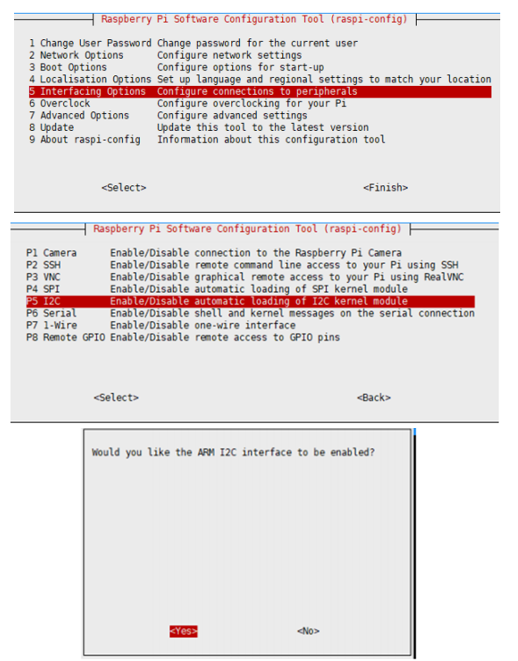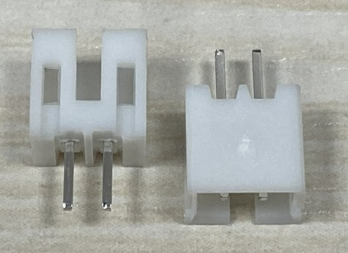UPS HAT (C)
| ||
Introduction
UPS HAT (C) For Raspberry Pi Zero, 5V Uninterruptible Power Supply, Multi Battery Protection Circuits
Features
- Onboard spring pogo pins for connecting with Raspberry Pi Zero series boards.
- Li-po battery recharge chip, with dynamic path management, a more stable power supply.
- Voltage boost chip, providing regulated 5V power output.
- I2C bus communication, monitoring the battery voltage, current, power, and remaining capacity in real-time.
- Multi battery protection circuits: overcharge/discharge protection, over current protection, and short circuit protection, more safe and stable.
- Recharging indicator for monitoring the battery operating status.
- Comes with online development resources and manuals.
Specifications
- Output voltage:5V
- Charger:5V
- Control bus:I2C
- Battery supported:803040 Li-po battery 1000mAh 3.7V (NOT included)
- Dimensions:65 × 30mm
- Mounting hole:3.0mm
Hardware
- ETA6003: recharge manager
- TPS61088: voltage boost chip
- INA219: voltage/current monitor
- S8261: Li-po battery protection chip
- FS8205: Li-po battery protection MOS
- Pogo pins: for connecting with Raspberry Pi Zero
- USB recharge port: 5V charger input
- Battery header: for connecting 803040 Li-po battery
- Power indicator
- Recharging indicator
The Micro USB port is the charging port, the Input voltage is 5V, LED is on when charging and off when fully charged. 0FF/ON silkscreen is the power switch silkscreen.
Note 1: Please turn the power switch to OFF before you connect the battery, or the board may be damaged because of shorting.
Note 2: The board may not work when you mount the batteries for the first time, you need to charge batteries on board for a while to activate them.
Note 3: The discharge current is about 1.8A if the battery was fully charged, and it gets smaller as the battery voltage. If the working current required by Raspberry Pi is too big, it may cause over-current and low-voltage problems and the Pi may keep rebooting.
SAFETY CAUTIONS
- Li-ion and Li-po batteries are quite unstable. They may cause fire, personal injury, or property damage, if they're not properly recharged or used.
- Do not reversely connect the polarities when recharging or discharging the battery. Do not use inferior charger/charging panel to recharge the battery.
- Do not mix use old batteries with new ones, avoid using batteries of different brands.
- When buying Lithium battery, make sure the battery specification is compatible with the expansion board. Choose batteries from formal manufacturer, and ensure the batteries will work stably and safely by aging test.
- Lithium batteries have limited cycle life, they will also deteriorate as time goes by. Should be replaced with new ones when the batteries reaching their max cycle life, or working over two years, whichever comes first.
- Should be placed carefully and properly, keep it away from inflammables and explosives articles, away from children, avoid any safety accident caused by careless storage.
How to use
Enable I2C interface
Open the terminal:
sudo raspi-config Choose Interfacing Options -> I2C ->yes
sudo reboot
Run the example
Fix the UPS HAT (C) with Raspberry Pi.
Open a terminal and run the following commands:
sudo apt-get install p7zip wget https://files.waveshare.com/upload/4/40/UPS_HAT_C.7z 7zr x UPS_HAT_C.7z -r -o./ cd UPS_HAT_C python3 INA219.py
The terminal will print the IP address, battery voltage, current, and the percentage of battery quantity, as well as the CPU, GPU, and memory information after starting the server.

Note: if the current value is negative, it means that the batteries are feeding the Raspberry Pi. If the current value is positive, it means that the batteries are charging.
Resources
Demo codes
Document
- Schematic
- 1/10/Ina219.pdf INA219 Datasheet
- 3/3f/ETA6003.pdf ETA6003 Datasheet
- 1/18/TPS61088.pdf TPS61088 Datasheet
- 8/8d/S8261.pdf S8261 Datasheet
FAQ
- You need to connect and charge the battery with the HAT for a while to activate the protective circuit and then set the switch to ON.
- Without other devices and in standby mode, the battery can feed the Pi zero for about 7 hours after fully charging.
- The output current is about 1.8A if the battery was fully charged, and goes smaller as the voltage. It will automatically cut off the power if the current is too small.
- If the power of the load is too big, the Pi zero may keep rebooting.
- The capacity is measured by the battery voltage, it is higher than the actual value if you connect the power adapter for charging.
- The expected voltage when fully charging is 4.2V, however, the actual voltage will be smaller than it.
- 803040 is a polymer lithium battery, the dimension is 40mm*30mm*8mm, standard voltage is 3.7V and the full voltage is 4.2V.
- It turns on when charging and turns off when fully charging.
- Negative value means that the battery is discharging and powering the Pi.
To charge the battery, you should connect a 5V Micro USB power adapter to the micro USB port of the HAT.
- I2C is not turned on, please turn on the I2C of Raspberry Pi.
- The pogo pin contact is poor, you can use the following command to test whether the device is recognized:
- Install i2c-tools for easy viewing of the I2C address, and enter it in the console:
sudo apt-get install i2c-tools
After waiting for the installation, you can execute the following commands to view the I2C address:
sudo i2cdetect -y 1
If the UPS HAT is inserted by default, you can see the following effect after running the following commands:

If it is not recognized, please tighten the screws and solder the pin header to make it tight.
{{{5}}}
After replacing the battery, you need to charge it first to activate the battery protection circuit, and the switch can be output by turning ON.
{{{5}}}
Yes, it supports the 3.7V single lithium battery, and the capacity is not the affecting factor (no special restrictions). We recommend using our matching batteries (with aging test, and more stable)
{{{5}}}
Yes, it supports Raspberry Pi Zero 2W.
{{{5}}}
Yes, you can use the 5000mah Li-po battery, and the voltage should be 3.7Volt.
{{{5}}}
The resistor is 0.1.
{{{5}}}
Please install the following libraries and test again:
sudo apt-get install python-smbus sudo apt-get install python3-smbus
{{{5}}}
Support
Technical Support
If you need technical support or have any feedback/review, please click the Submit Now button to submit a ticket, Our support team will check and reply to you within 1 to 2 working days. Please be patient as we make every effort to help you to resolve the issue.
Working Time: 9 AM - 6 PM GMT+8 (Monday to Friday)



